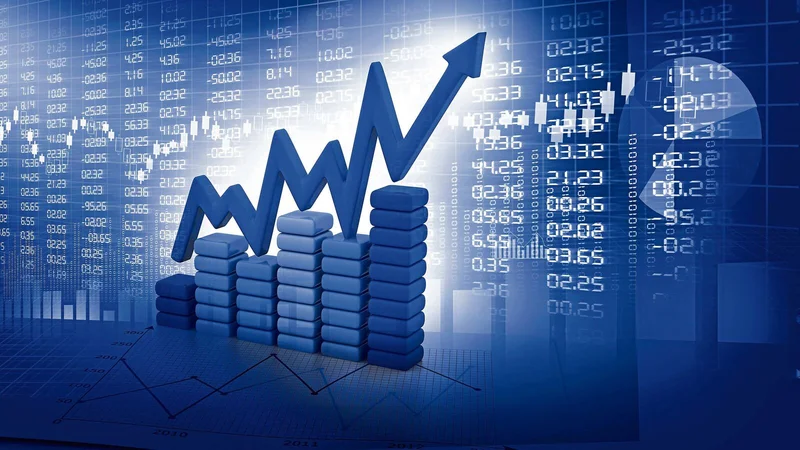Real-Time BNB Signal Analytics
Real-Time BNB Signal Analytics
Anatomy of a Rally: Deconstructing the Contradictions in Today's Market
With the Dow cresting 47,000 and the S&P 500 logging a staggering 36% gain in just over six months, it’s easy to feel invincible. Your 401(k) is likely hitting highs you haven't seen before, and the financial news cycle is a steady drumbeat of record closes. This is the part of the cycle Wall Street calls a "Goldilocks environment"—not too hot, not too cold.
But euphoria is a poor substitute for analysis. When everything is going up—stocks, bonds, even crypto—it’s not a sign of a universally healthy economy. It’s often a signal of a market driven by a single, powerful narrative rather than a diverse set of fundamentals. Right now, that narrative is a potent cocktail of boundless AI enthusiasm and the unwavering belief that the Federal Reserve stands ready to cut rates at the first sign of trouble. My analysis suggests this rally, while impressive on the surface, is built on a dangerously narrow and increasingly fragile foundation. The data points to a significant disconnect between the market’s price and its underlying health.
To understand this market, you have to start with the chip sector. It’s the engine room of the entire rally. Look at SK Hynix, the primary supplier of high-bandwidth memory to Nvidia. The company’s stock soared more than 7% in a single day in Seoul, and its operating profit surged 62%. The most telling data point? Its entire planned supply for 2026 is already sold out. This is the tangible, real-world evidence of the AI boom.
This data feeds directly into the Nvidia narrative. Nvidia, the undisputed poster child of the AI gold rush, continues to hit new records. Its valuation is, to put it mildly, aggressive. The stock is trading at 54 times its trailing twelve-month earnings, a massive premium over the S&P 500's already-lofty P/E ratio of nearly 30. This isn't just optimism; it's a price that reflects a flawless execution of a multi-year, exponential growth story.
What we're witnessing is a classic feedback loop. SK Hynix’s success is seen as a direct validation of Nvidia’s future, which in turn justifies its sky-high valuation. Because Nvidia is a key member of the "Magnificent Seven" (which have accounted for roughly 41% of the S&P 500's gains this year), its ascent pulls the entire market up with it. The market isn't a broad, healthy ecosystem right now. It's more like a meticulously engineered greenhouse, where SK Hynix, Nvidia, Mercedes, MAG 7 earnings: Trending Stocks are being force-fed capital and hype, casting a shadow over everything else. But this raises a critical question the market seems to be ignoring: If the key supplier is already at capacity for the next two years, where does the next phase of unexpected, explosive growth that's priced into these stocks actually come from? Are investors assuming a supply-chain miracle that the suppliers themselves haven't even factored in?

Once you step outside the AI greenhouse, the climate changes dramatically. The data from other core sectors of the economy doesn't just fail to support the rally; in many cases, it directly contradicts it. The cognitive dissonance is staggering.
Consider the automotive industry. Mercedes-Benz stock shot up over 5% after announcing a 2 billion euro share buyback, even as it confirmed that profits were slumping due to weak sales in China. This is a market rewarding financial engineering over operational success. Meanwhile, Toyota, which just posted record sales growth of 4.7%—an actual, fundamental achievement—saw its stock fall after announcing a more aggressive push into electric vehicles. The market punished a company for investing in its future while rewarding another for papering over its present weaknesses.
And this is the part of the data that I find genuinely unsettling. We are seeing a wave of significant layoffs. UPS announced it was cutting 48,000 jobs, and its stock immediately surged 8%. Amazon and Target are also making major cuts. The market is cheering cost-cutting measures that directly impact the consumer. Yet, the broader bull case for the economy rests on the resilience of that very same consumer. You can't have it both ways. A market that celebrates mass layoffs while simultaneously banking on robust consumer spending is a market in denial of basic economic logic.
These aren't isolated incidents. They are outliers that tell a story. ASM International, a key Dutch chipmaking-equipment supplier, saw its stock drop 2.4% after it missed forecasts, citing specific challenges in China. This is a real-world data point that punctures the frictionless AI growth narrative. While the Magnificent Seven are propelled by hopes of U.S.-China trade tensions easing, other companies are already reporting the damage from the existing friction. The market is selectively listening, amplifying the good news from a few giants while dismissing the warnings from the broader industrial base as mere noise. It’s a dangerous game of confirmation bias.
Ultimately, this isn't a market trading on fundamentals. It's a market trading on a story. That story is that artificial intelligence represents an industrial revolution so profound it will render all other economic data irrelevant, and that the Federal Reserve will provide a safety net of cheap money to cushion any stumbles along the way.
The problem is that this narrative is now priced for absolute perfection. There is no margin for error—not for a geopolitical flare-up, not for a stumble in big tech earnings, not for a consumer who finally buckles under the pressure. The VIX, the so-called "fear index," is hovering around 16, a level that signals deep complacency. But in this context, it doesn't feel like calm; it feels like a lack of imagination. Investors are so focused on the potential rewards of the AI narrative that they are systematically underpricing the very real risks emerging in the rest of the economy. The market isn't just running on FOMO fumes; it's running on a belief system, and belief systems are notoriously brittle when they collide with contradictory data.